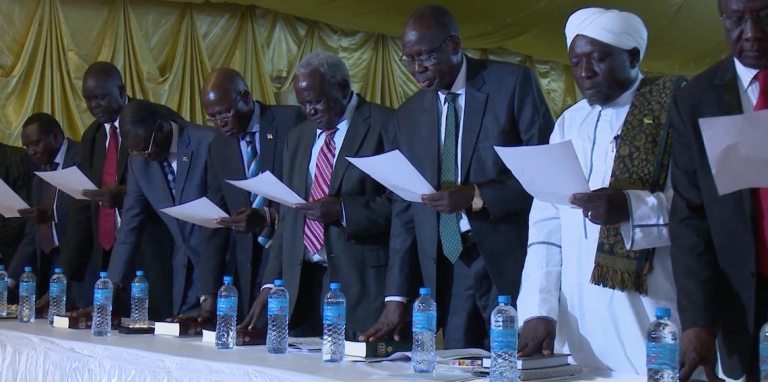South Sudan dialogue body proposes to re-establish colonial three provinces

November 13, 2018 (JUBA) – The South Sudan National Dialogue (SSND) body has proposed to re-establish the three-province system in the country saying it was a valid administrative division.
The SSND steering committee, on 23 October 2018, endorsed a “Proposal on the Reorganization of the South Sudanese State”. This document will be discussed and amended in regional meetings to be held across the country and the National Conference before to be presented to the revitalized transitional government when it is formed in 2019.
The text seeks to assess several national issues including the performances of the South Sudan ruling SPLM and severely condemn the single-party political system established after the independence.
The document keeps silent on the contested 32 states established by President Kiir in October 2015. But it points to the failure of the 10-state administrative system inherited from Sudan saying it had not worked.
Following what the text proposes to revert back to the three colonial provinces of Bahr el Ghazal, Equatoria and Upper Nile and to restore with it the same subdivision of administrative districts as they had existed before.
Accordingly, Bahr el-Ghazal will be subdivided to “seven districts as they stood before independence as Aweil; Gogrial; Lakes; Eastern Lakes; Raga; Tonj; and Wau, with their colonial district capitals”.
“Equatoria should revert back to its colonial districts of Juba; Kapoeta; Maridi; Tombura; Torit; Yei; and Yambio”.
“Upper Nile reverts back to its districts of Akobo; Bentiu; Bor; Kodok; Malakal; Nasir; Pangak; and Renk.”
The proposal underscores that there may be a need to operate some “minor adjustments” due to increased population or other reasons.
“You can call these states or regions, whatever names or titles you wish. The idea is to rethink the type of administrative reforms from here because these were the only administrative formations that South Sudanese political rivals did not contest,” adds the document.
During the revitalization forum, the South Sudan Opposition Alliance (SSOA) proposed to re-establish the three provinces system. But the idea was not retained by the mediation as they preferred to leave the fate of the controversial 32 states be decided during the transitional period.
The People’s Democratic Movement of Hakim Dario which, rejected the revitalized agreement, called for a federal system of governance during the transitional period, based on three autonomous regions of Upper Nile, Equatoria and Bahr el-Ghazal with their borders as they stood on 1st January 1956.
The ambitious SSND proposal provides to elect the governors of the three provinces through a universal suffrage and that the president of the republic or any authority cannot relieve them except in case of impeachment.
In the national level, the dialogue body goes to propose the rotation of the South Sudan presidency between the three provinces of Bahr el-Ghazal; Equatoria and Upper Nile.
During the peace celebration day in Juba on 31 October, President Salva Kiir called on the opposition groups to join the government-initiated process of the national dialogue.
Only, the SPLM-IO reacted to the proposition saying they formed a committee to evaluate the process and how to combine it with the reconciliation process of the revitalized peace agreement.
(ST)
